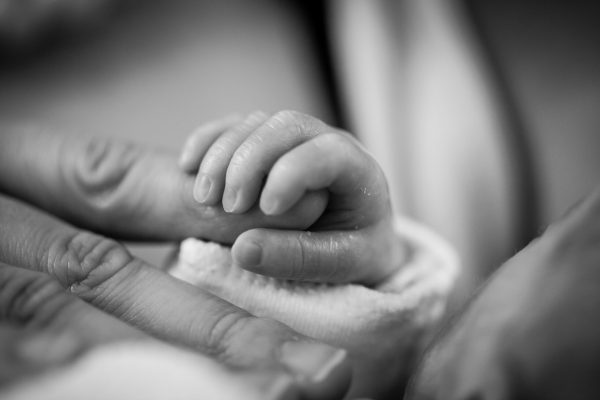I didn’t want “just” a naming. It’s incongruous that boys are entered into the covenant and not girls. Friends of ours had a brit for their daughter in front of their house. Brit means covenant, not boy, yet we make that connection. I wanted to separate it.
I’m a Conservative rabbi, and I wanted to include text. Orlah means foreskin in Hebrew–foreskin, heart, lips, and ears. It’s the act of opening or removing a barrier that prevents connection and gets between one and G-d. It was a ceremony to mark the fact that our daughter would relate to G-d without barriers.
I have a Syrian background, so I took Henna, the Moroccan wedding tradition, and marked her with it in those three places [heart, lips, and ears]. I opened with words from songs about connecting with the Sephardic traditions. Then I washed the henna off with water. I used language from Jeremiah about the image of G-d and a young girl. I looked at traditional ceremonies and the Bible, but developed the Henna covenant myself.
We also used some of the traditional brit milah boy language in the ceremony for my daughter. People don’t come up with ceremonies in a vacuum–others informed my process. It was developed in Hevrutah [partnership] with my husband, some female friends, and a rabbi.
It’s a very powerful thing to come up with a new ritual. It would be wonderful to have workshops where women got together to come up with new ceremonies. Rituals and ancient text have an ancient power. If I hadn’t used ancient texts I don’t think the ceremony would have been as powerful. My husband and I led it. It’s a blur now. Everyone remarked, “It’s just like a bris.” My daughter cried. It felt like the affirmation of a Jewish girl into the community and the covenant. It felt authentic to me.
It’s powerful that a girl will be wrapped up in the text and affirmed in the covenant. When the textual and feminist elements come together it’s the most powerful expression of Judaism. It felt old and new at the same time. We used a cup of Miriam in the ceremony. My parents had been waiting a long time for a grandchild. I’m an only child and my husband is too. So my parents went all out. It was a big event in every sense. Our daughter was born on Rosh Hodesh, Shabbat, and Hanukkah. We held the naming on the following Rosh Hodesh.
If we ever have a boy, I want to have a brit milah with a larger component about the barriers and the covenant.”
Read Diane Cohler Esses’ babynaming ceremony for her daughter, “The Brit of Ayelet Kalila Vivianne Cohler-Esses.” on ritualwell.org.











